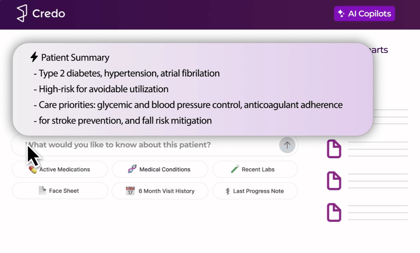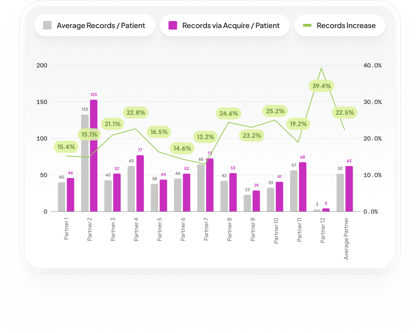The Secret to Reducing Provider Burnout in 2024

Healthcare’s provider burnout crisis is not going anywhere. And if organizations don’t learn how to address the root causes, burnout rates will only continue to grow.
In its latest report on the state of physician burnout and depression, Medscape found that 49% of physicians report feeling burnt out. And in an equally telling data point, only 23% believe that their employer recognizes their burnout.
In this article, we’ll explore how burnout impacts both providers and the patients they serve. We’ll also explain what Medscape’s report reveals about the true cause of burnout and outline one action you can take to start addressing those causes today.
Who is Experiencing Burnout in 2024?
While burnout can impact physicians at any organization and in any specialty, there are certain factors that correlate with higher burnout rates across the board. Consider these results from the Medscape survey to better understand who’s most impacted by burnout:
Women experience burnout more frequently than men (56% vs 44%), and emergency medicine, Ob/Gyn, oncology, and pediatrics reported the highest burnout rates in 2024.
Of those physicians experiencing burnout, 42% say they’ve felt this way for more than 2 years, and 15% say their burnout is so severe that they may leave medicine altogether.
These numbers indicate a widespread problem that requires a collaborative, multifaceted approach.
How Paperwork Leads to Burnout
It may surprise you to learn that the biggest contributor to burnout is not long hours, staffing shortages, or challenging patient interactions (though all of these things can play a role).
Instead, 62% of providers reported that having “too many bureaucratic tasks” like charting and paperwork contributes the most to their burnout, according to Medscape.
This makes sense when you consider the enormous workload that comes with collecting and reviewing medical records, especially for at risk providers and those working with senior populations.
In fact, we surveyed attendees at a recent webinar, and 67% reported that their providers spend 3 or more hours per day on chart chasing and medical record reviews, with 29% reporting spending 5 or more hours.
If organizations want to protect their providers from burnout, one of the best places to start is a reexamination of the administrative workflows, medical record processes, and coding tasks that take up significant amounts of time for providers and hinder their ability to care for patients.

Reducing Administrative Burdens through Automated Record Retrieval and Analysis
While no single organization can solve the provider burnout crisis on their own, our team at Credo is laser focused on addressing this one specific pain point: manual chart chasing and medical record review.
When using our PreDx product, organizations can access all of a patient’s medical records in an easy-to-read, digital format, along with a summary of their medical history and possible diagnoses.
This allows providers to walk into the patient’s first appointment with a comprehensive understanding of their history and potential care gaps. PreDx not only saves providers time and energy, but it directly impacts care quality and increases RAF scores for at-risk organizations.

If you’re interested in learning more about the results PreDx can deliver for you and your organization, we’d love to provide you with a demo and talk further about your specific needs and pain points. Get in touch today by filling out this form, and let’s work together to support your providers through the burnout crisis.
Back to blog

.png?width=420&height=297&name=Credo-25-Chart-ProductValidation-Inspect%20(1).png)


